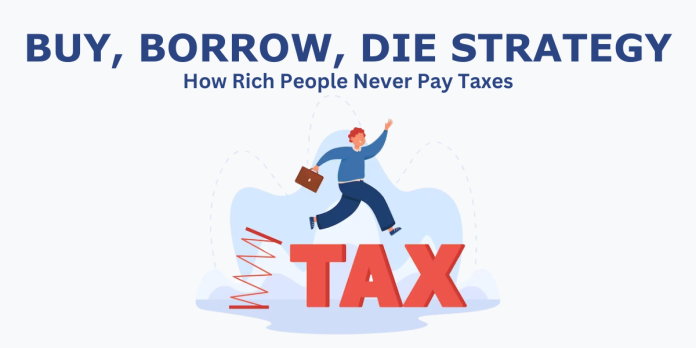In the finance domain, there is a common misconception that wealthy individuals somehow manage to escape paying taxes. While it is true that some high-net-worth individuals pay lower effective tax rates than middle-class earners, the statement that they don’t pay taxes at all is largely inaccurate.
The key to understanding this phenomenon lies in the nature of wealth and how it is generated. Unlike middle-class earners who receive their income through salaries, many wealthy individuals derive their wealth from assets like stocks, real estate, and businesses. These assets appreciate in value over time, but this appreciation is not considered taxable income until the assets are sold.
This means that a billionaire with a massive portfolio of stocks can watch their wealth soar without paying a dime in taxes. They can use loans against the value of their assets to fund their lifestyle without triggering any tax liability.
Another strategy employed by wealthy individuals is to defer taxes by passing on their assets to heirs through inheritance. In many countries, inherited assets are not subject to capital gains taxes, allowing the wealth to be transferred from one generation to the next without significant tax implications.
It’s important to note that not all wealthy individuals engage in elaborate tax avoidance schemes. Many pay their fair share of taxes, and some even advocate for higher taxes on the rich. However, the complexities of the tax system and the nature of wealth creation do allow some individuals to legally minimize their tax burden.
The question of whether this is fair or equitable is a matter of ongoing debate. Some argue that wealthy individuals should pay more to support social programs and infrastructure, while others maintain that high taxes discourage investment and economic growth.
The “Buy, Borrow, Die” Strategy
One particularly controversial tax strategy employed by some wealthy individuals is known as the “buy, borrow, die” strategy. Under this strategy, individuals borrow money against their appreciating assets, such as stocks or real estate, and use the borrowed money to fund their lifestyle expenses.
The beauty of this strategy is that the loans are not considered income, so they are not taxed. The individual can continue to borrow against their appreciating assets without ever having to pay taxes on the gains. And when the individual dies, the assets pass on to their heirs tax-free, further perpetuating the cycle of wealth accumulation without taxation.
This simple wealth-building strategy involves three key components:
- BUY: Buy real estate, stocks, or collectables to gain value over time. Try to purchase assets that generate enough income to cover your living expenses. Rental real estate is a good way to achieve this goal because the income and expenses are predictable.
- BORROW: If you need cash, you can refinance your property. This means you can get a new loan with a lower interest rate, and you can use the extra money to improve your property, buy another property or investment, or cover other personal expenses. By refinancing instead of selling your property, you can delay paying taxes on the capital gains, which can range from 15% to 20%.
- DIE: When a taxpayer dies, their heirs will not have to pay taxes on the increase in value of any assets they inherit.
It’s important to understand why people think rich people don’t pay taxes, even if you don’t agree with the idea. By learning about how wealth and taxes work, we can have better discussions about taxes and how rich people affect society.
Know More:
- India’s top 10 Tax Paying Entities
- Tax Implications of Credit Card Spending in India
- Income Tax on Futures & Options (F&O) Trading
- Importance Of Tax-Adjusted Real Rate Of Return In Investments
Disclaimer: This blog has been written exclusively for educational purposes. The information is based on various secondary sources on the internet and is subject to change. Please consult with a financial expert before making investment decisions.


